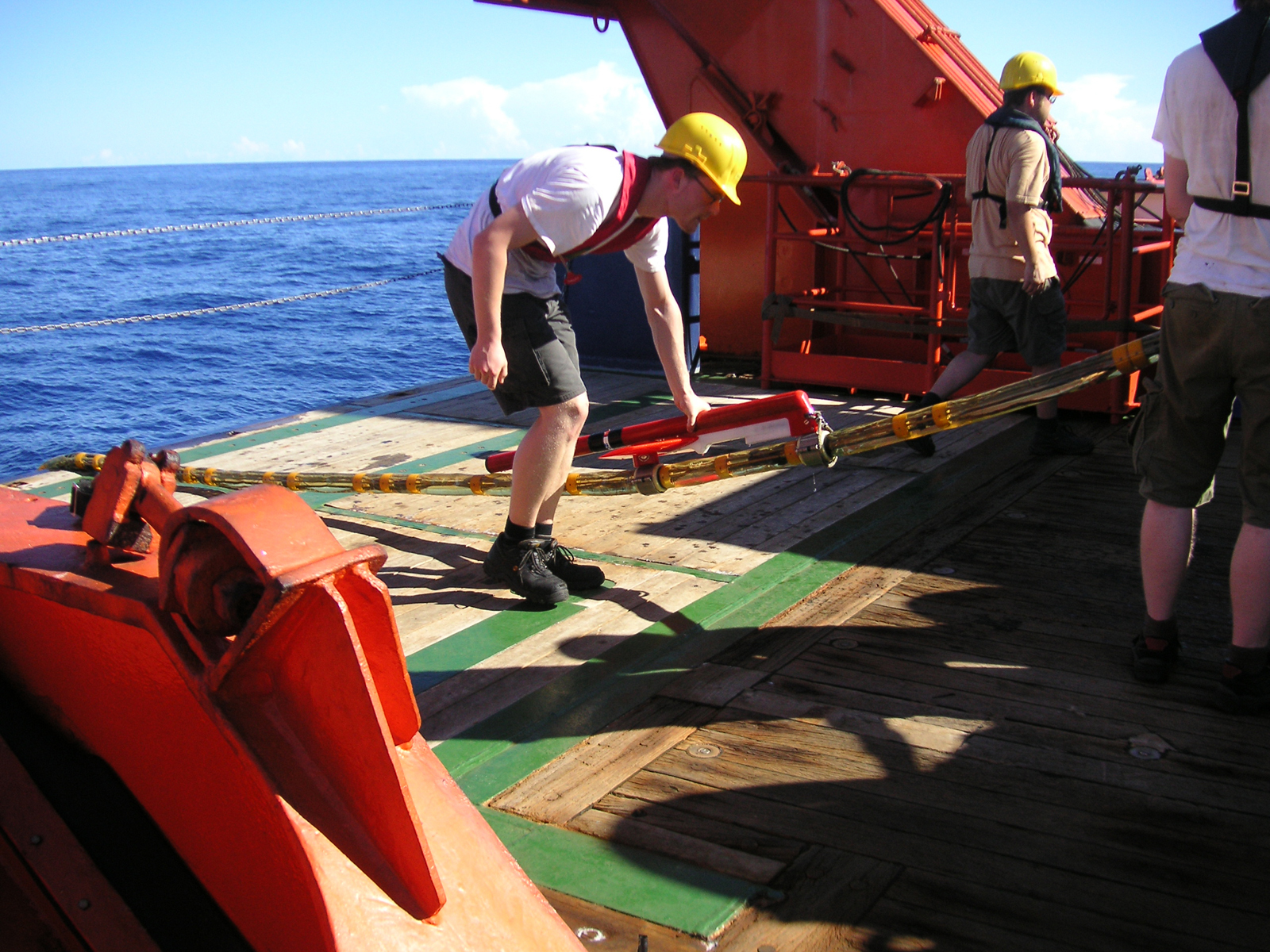Safely anchored at sea
Different layers of the seabed reflect sound waves in a specific way. Researchers are harnessing the benefits of this fact to efficiently track down suitable offshore sites for wind energy plants. They use pressurized cannons, which emit acoustic signals that are recorded by underwater microphones.
Visible from miles around, the wind turbines thrust out of the North Sea. Standing beside each other in neat lines, they brave the rough seas and defy the ravages of any storm. To determine the best locations for wind energy plants, extensive studies of the ocean floor are needed. Ultimately, the foundations must not loosen in the sediment, not even years later. In order to evaluate offshore sites, researchers at the Fraunhofer Institute for Wind Energy and Energy System Technology IWES in Bremerhaven are utilizing the fact that different layers of the seabed reflect acoustic waves in a specific pattern. Using acoustic or pressurized cannons, the scientists generate signals that are recorded by underwater microphones. The test readings on the ground conditions are essential for the planning of the foundations.
»To generate acoustic signals, we exclusively use pressurized cannons for our seismic measurements. Based on the acoustic speed and time period that the signal needs to reach the microphone, on the one hand we can deduce the depth position of various reflectors or sedimentary layers. On the other hand, acoustic waves reverberate off the surface of the ocean floor and the layers of sediment below it at differing strengths. Where the physical traits of the individual seabed layers markedly differ from each other, the reflections are particularly strong,« explains Florian Meier, Geologist at IWES. By virtue of its stability, sand has proven to be a suitable material for offshore foundations. More precise investigations are often necessary at locations with clay layers; by contrast, soils with boulders or massive peat beds are unsuitable as foundation soil.
Hydrophones mounted inside streamers are towed through the water behind a survey vessel, and record the reflections. A streamer refers to a waterproof tube, up to several kilometers in length, filled with oil. The hydrophones at fixed at one-meter intervals. Software analyzes the recorded signals. The computer is conveniently located right on the ship. »We are the first to use shallow water multi-channel seismology in the North Sea at depths of 20 to 100 meters to explore foundation soil. While we use 50 or more hydrophones, other researchers often work with just a single channel. Among other things, this multi-channel method provides for better signal quality. Furthermore, most surveys don’t use pressurized cannons. But by using these, we can penetrate into deeper sediment layers, up to the foundation of the wind energy system,« says Meier. In 2009, IWES conducted a seismic foundation soils exploration for RWE.
